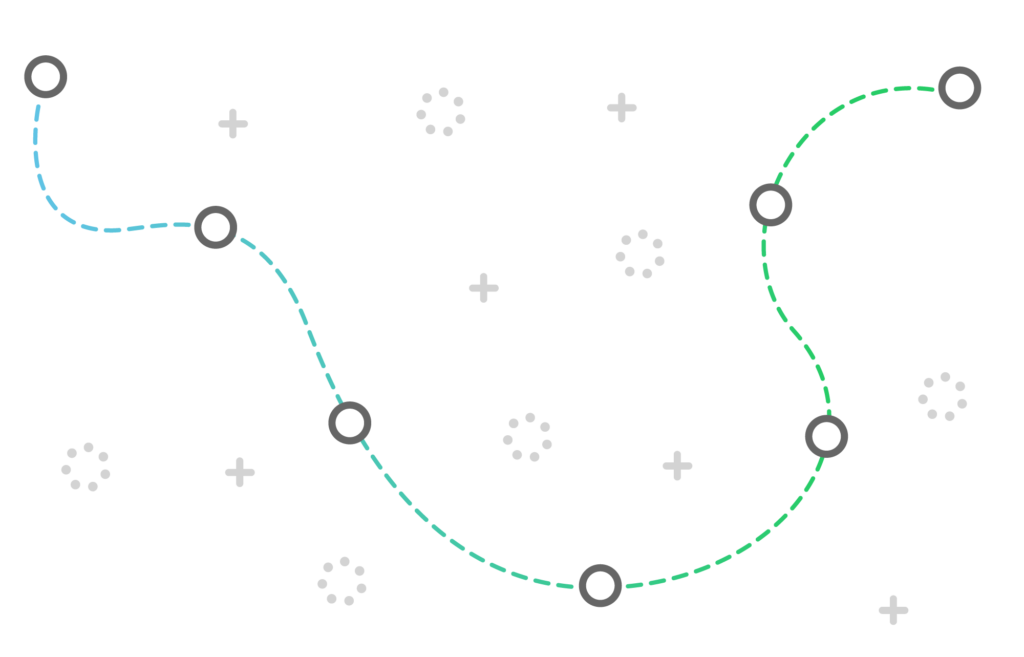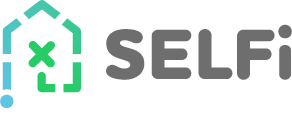Congratulations, you’ve made it to retirement. Now what? Golf, travel, relax by the beach, refinance your mortgage. Say, what? Conventional wisdom holds that you shouldn’t have a mortgage to pay by the time you are retired. After all, a life free of mortgage payments means more money for your living and travel expenses.
“The idea of going into retirement without a mortgage is embedded into our collective psychology. It’s a life goal for many homeowners to own their home free and clear,” says Joseph Flannery, the CEO of SelFi, a DIY online mortgage brokerage. But for some people, a completely paid-off house in retirement is not an attainable goal. But with interest rates in the lowest range they’ve been in years, refinancing your mortgage could be a great way to free up some cash in retirement. Unfortunately, refinancing your mortgage as a retiree can be tricky: here’s a guide.
Get your paperwork in order
Like any mortgage, you’ll have to qualify, so your next step will be to get your paperwork in order. The biggest obstacle to any refinance is qualifying—your debt-to-income ratio still has to be within the threshold required by Fannie Mae and Freddie Mac and that’s harder to do when you’re on a fixed income. So even with a perfect credit score, some retirees don’t qualify because they just don’t have enough income.
Tally up all your sources of income, including your Social Security funds, your IRA or 401(k) withdrawals, pension, and dividends from stocks or investments. If you have any other sources of income, such as alimony, income property or a side-hustle, include those. A consistent source of funds is key. You have to be able to demonstrate long-term financial resilience. You’ll also need a new appraisal on your home, which may boost the value of its worth and help you qualify.
![]()
“Unfortunately, refinancing your mortgage as a retiree can be tricky: here’s a guide.”
Set your goals
Are you looking to refinance to get a lower overall payment, or the ability to pay off your mortgage more quickly? Or is it a way to boost your cash on hand (either via a lower payment or via a cash out refinance)?
Once you understand your goals, it’s easier to take the next steps.
Goal 1: Get a Better Monthly Payment or Pay Off the Mortgage
- Lower Overall Payment
Refinancing for a lower overall payment can put a significant amount of money in your pocket, says Josh Chamberlain, a financial planner based in Decatur Georgia. For instance, if you are dropping from 3.75 percent to 2.75 percent for a $100,000 30-year fixed mortgage, the monthly payment is $55 less—a savings of 12 percent. It might not sound like much, but on a fixed income, that might make a bigger difference than you realize.
- Pay It Off Faster
You can lower your interest rate, but keep your monthly payment the same or pay more to pay it off more quickly. If you got a 30 year mortgage during the nineties or early 2000s, interest rates were as high as 9%, a far cry from the current rate, 2.74%. Lowering the interest rate and paying the same amount means you’ll pay off the house far sooner. Taking Chamberlain’s example from above, he says, “A $100,000 30-year loan, going to a 20-year loan, at 2.5%, for $67 more each month, you shave 10 years off your loan. And you pay $39k less in interest.”
PROS:
- Lower interest rates, lower payments, and shorter payment terms are all possible with a refinance in retirement.
- An added bonus to refinancing with a lower interest rate, says Larry Pershing, a member of the National Association of Personal Financial Advisors and the CEO of Optimum Retirement Planning , is it girds you against rising inflation. “When someone takes out a mortgage with a fixed interest rate, they lock in their monthly payment,” Pershing says. For example, say someone has a $1,000 payment. If inflation rises 5% for a few years, that $1000 “becomes easier to pay, relative to all other items.”
CONS:
- You’ll still incur some fees, and if you choose the lower overall payment, you will pay more in interest over time.
- You may not qualify if your income is too low.
Goal 2: Get Cash
Financially savvy homeowners may be looking for more ways to build more wealth or increase their income via their mortgage. Others may be looking to increase their monthly income, or wish to renovate their homes, or even splurge on a vacation. There are several options:
- Cash-out refinance
- Reverse Mortgage or HECM (Home Equity Conversion Mortgage):
- Home Equity Line of Credit or HELOC:
- Home Equity Loan
Cash-Out Refinance
A cash-out refinance is amongst the riskier moves a retiree can make, but it can also pay off in big ways. You can use a cash-out refinance to pay down your loan, pay down credit card loans, or invest it (in other property or the stock market). You can also use a refinance to help out with expenses and vacation.
With a cash-out refinance, “you are increasing the risk associated with the money that you have already used to pay down the loan,” Chamberlain says. “If you need cash for your monthly expenses, it may mean that you need to spend more time thinking about your monthly budget, rather than trying to take cash out of the mortgage.”
But some retirees will do a cash-out refinance, and invest that money in the stock market.
It’s not as crazy as it sounds. Flannery has one customer who owns his home free and clear but is doing a cash-out refinance and investing. It’s a calculated risk: his interest rate is under 3 percent—and the annual returns on the stock market on average are 8 or 9 nine percent. His customer is betting on a 5 percent return on investment. And, don’t forget, there’s a tax write-off for the interest paid on the mortgage.
Some retirees refinance their mortgage with a cash-out refinance so they can pay off other debt, especially credit card debt. Credit card interest rates are painful—13 or 14 percent minimum, typically—and if you can take a cash-out refinance at less than 3 percent, that’s a huge amount of savings.
PROS:
- Can use it to pay off other debt or invest in the stock market.
- Can be a new source of cash flow.
CONS:
- It’s one of the riskiest ways of stretching your money, especially if invested in the stock market.
- One scenario should give you pause, says Larry Pershing, the founder and CEO of Optimum Retirement Planning: “Many people use their homes as their back-up asset to pay for long-term care expenses if they arise. “Refinancing your home, and pulling out cash decreases the reserve you have to pay for unexpected expenses such as long-term care.
![]()
“A cash-out refinance is amongst the riskier moves a retiree can make, but it can also pay off in big ways.”
Reverse Mortgage—HECM
A reverse mortgage pays you. In this scenario, a homeowner who, for instance, owns their $100,000 home outright, and wants a reverse mortgage, can opt to get paid $500 a month. Each month the balance goes up $500 plus compound interest. What is remaining is left for heirs to decide—to sell or pay it off. The downside with a HECM is the rates are higher than a traditional mortgage—current rates are around 3.45 percent—and you have to be at least 62 to get one. It’s not free money—you’ll be paying fees, including mortgage insurance, origination and service fees.
Another route: using a reverse mortgage to pay off a mortgage balance and eliminate payments: “For someone with limited retirement income and financial assets, it is a tool that may work,” says Jim Kinney, the founder of Financial Pathways, based in New Jersey. On one hand, it “saps home equity that may be needed later in life,” he says, “but may help preserve limited financial assets at the same time.”
PROS:
- You get a boost in income.
- You can use the money as a second mortgage.
CONS:
- The fees and interest rates are higher than a regular refinance.
- A reverse mortgage may leave your heirs with less. Some even have clauses that require the family to vacate within 90 days of borrower’s death.
Home Equity Line of Credit—HELOC
A HELOC is like having your own credit attached to your home. You can carry a balance or have no balance. And like a credit card, you must pay the interest, but you don’t need to pay down the principal (though interest can rack up quickly). The interest rate is variable, which means the minimum may fluctuate as well.
PROS:
- Fluid and flexible—get funds when you need it. Pay it back as you can, as long as you pay the interest.
CONS:
- Interest can rack up quickly if you hold a large balance.
- Missed payments can mean you lose your home.
- Fluctuating rates and payments.
- Lines of credit can revoked
Home Equity Loan
And when retirees don’t own their home outright, but have paid more into their mortgage than they owe, they will often get a home equity loan and get a lump sum outright as a second mortgage. With a fixed interest rate and a set payment, it is more structured than the HELOC. Oftentimes, this money is used to make home improvements.
PROS:
- You get all the money at once.
- More structured than a HELOC.
- You can use this for home improvements.
- Money can be used as a second mortgage.
CONS:
- If you have debt you will likely not qualify.
- Your home is at risk if you miss payments.
- You might have pulled out more or less than you needed.
Pick the path that will help you most enjoy your retirement
Whether you just want a better interest rate and the lower payment that it entails, or you want to borrow against your home to make improvements or invest, there are a multitude of options for seniors who have the income necessary to qualify. And what works for your neighbors may not work for you. It’s smart to consult a financial advisor and check interest rates online at sites like SelFi and Rocket Mortgage. Choosing the best option may be the difference between a good and a great retirement.

The elimination of the adverse market fee makes refinancing more affordable in 2021.

